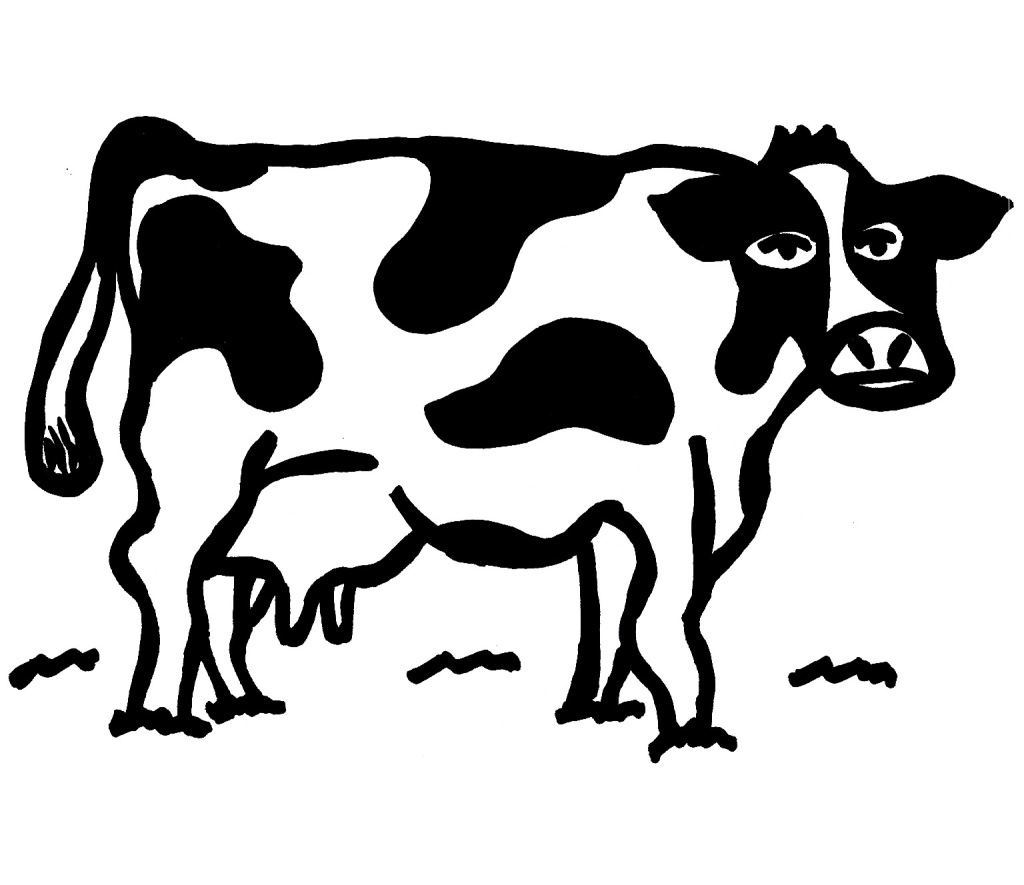20. A potent fable about the cost of notoriety and fame, Dream Scenario is a strong showing from Norwegian writer-director Kristoffer Borgli, who also edited the film. The movie charts the sudden memetic popularity of a sad sack professor at a lower tier university who is always on the verge of self-actualizing but never has the wherewithal to stop procrastinating and apply himself; when he begins appearing in people’s dreams, through no action of his own, he becomes an instant internet star, only to see that fame come crashing down when his dream avatar becomes a more frightening figure. Read my review here.
19. A coming-of-age story that incorporates many of the best parts of children’s fantasy that came before it, from The Chronicles of Narnia to The Wonderful Wizard of Oz to Alice’s Adventures in Wonderland and more, The Boy and the Heron sees these familiar narrative devices through the lens of a childhood haunted by grief and as imagined by the most talented living animation director, Hayao Miyazaki. A movie that can be frustrating to an audience that is unwilling to float along with its dream logic or to those viewers who are uncomfortable with ambiguity, it’s hard to imagine that something this stuffed with the fantastic could be said to leave a lot to the imagination, but it does. Most recommended movie of the year for bird people. Read my review here.
18. Not just for fans of Haruki Murakami’s literature, but perhaps poised to be most appreciated by them, Blind Willow, Sleeping Woman was adapted from disparate pieces from Murakami’s canon to create a (mostly) singular narrative by composer Pierre Földes, who also produced, directed, and scored it. The animation style is not as beautiful to the eye as the previous entry on this list, and can take a moment to adjust to, but it has a DIY magic all of its own. Read my review here.
17. Like The Boy and the Heron, Moon Garden draws a great deal of inspiration from the children’s fantasies of yesteryear, but instead of pulling from literature, it takes its direction from the darker kid’s fantasy films of the 1980s, like Return to Oz, The NeverEnding Story, Paperhouse, Labyrinth, and later works that evoke that same feeling like MirrorMask and Pan’s Labyrinth. A throwback to more creatively articulated dark fantasy through the use of older film techniques and (apparent) rejection of computer effects, this is one that I predict will have a lot of staying power in years to come. Listen to the Lagniappe Podcast Crew talk about it here.
16. Is there a way to describe something that’s almost the platonic ideal of an indie darling? Like, something that could accurately be said to be simply a rebundling of cliches but which is also somehow entirely new? That’s what Christmas sleeper hit The Holdovers is—to be honest, there may not be an entirely original idea anywhere in here, but that doesn’t make it any less affecting, emotional, or funny. Alexander Payne masterfully molds together a film that made me ache for every person on screen, a story I’d seen before but nonetheless brand new. Read my review here.
15. I absolutely adored Greta Gerwig’s adaptation of Little Women and wept openly at Lady Bird, but I must admit that I didn’t exactly have high hopes for this corporate synergy vehicle. Even as the date of Barbie’s arrival drew near and the entire internet burst out into endless grassroots marketing via Barbenheimer memes, I still mostly considered it more of a curiosity that was likely to make a dump truck full of cash than a potentially moving addition to Gerwig’s canon. It didn’t move me as much as her previous movies; America Ferrera is very close to my heart and I absolutely love every speech that she gives in this movie, but Jo’s declaration of independence to Laurie in Little Women wasn’t interrupted by a Chevy commercial like one of Gloria’s monologues here, which cheapens things a bit. But I did laugh more than in the others, and that was a lovely experience. It’s been six months and I still giggle when I think about Barbie’s frustration at being called a fascist — “I don’t control the railways or the flow of commerce!” Read my review here.
14. Another knockout bizarro comedy feature from Quentin Dupieux (Rubber), Fumer fait tousser (Smoking Causes Coughing) is a delightfully bloody flick that features a framing device that reminded me a lot of one of my favorite TV comedies, Danger 5, and this movie is similarly deconstructive. When a team of tobacco-based superheroes in the vein of Power Rangers is sent on a retreat by their leader, their telling of stories to one another stitches together vignettes of horror set against peace: an unbothered young man is reduced to a pulp by an industrial machine, a welder’s mask grants its wearer serenity but turns them into a murderer, etc. Delightfully funny and worth the attention. Read Brandon’s review here.
13. A slow burn thriller, Brandon initially pitched The Royal Hotel to me as a more grounded version of Alex Garland’s Men, and in his review, he also mentions Dead Calm, which is a personal favorite of my mother’s that became a favorite of mine. Both are good points of comparison, especially in regard to this film’s sense of omnipresent danger from a dangerous man (or men) in a completely isolated place, but the movie that I couldn’t stop thinking about while watching this one was Queen of Earth, which was my favorite film of 2015. I’ll echo the sentiments he expressed in his review completely, and add that I loved the slow burn of the relationship between the two women here, and loved that so much was left up to implication.
12. Some time after I initially reviewed it, Brandon texted me to let me know that he had enjoyed There’s Something Wrong with the Children more than expected, citing that it had “tapped into ‘I don’t really like being around kids’ energy in a relatable way,” which was also one of my favorite things about this anxiety-riddled second feature from director Roxanne Benjamin. There’s a little bit of fumbling at the finish line, but it’s not enough to wash away the bitter, unsettling aftertaste of the first three quarters. Read my review here.
11. I love a movie that pushes the boundaries and isn’t afraid to try something novel. As a film with virtually no dialogue, No One Will Save You is a triumphant example of how to make a story that’s 100% show and 0% tell without ever losing any of the tension of the main threat. Kaitlyn Dever is phenomenal here, and every emotion that crosses her face is palpable, one of the best single performances in anything I saw all year. Read my review here.
10. I was surprised by how much I still liked what will likely be the finale of my favorite horror series—and if it isn’t, the series is dead to me at least absent some major reparations for its cast. There might not be another one after Scream VI, but this was a pretty decent way to go out. I didn’t think that this series could continue without Neve Campbell, and the only way that it does manage to work is through the return of the previously presumed dead Kirby, played by Hayden Panettiere. The twists are less twisty here than they were in the immediately previous installment, and the connection to horror tropes are the most tenuous they’ve been since Scream 3, but the newer cast that was introduced in 5cream have gelled into a more interesting group this time around, with Melissa Barrios as the standout for improved performance since last time. It’s the best it could be without Sidney, and Gale Weathers’ inclusion in the plot from the start makes sure that the film hits the ground running. It’s rare for a horror franchise to hit this milestone without having such severe diminishing returns that it becomes a shell of itself, but this one finishes strong. Read my review here.
9. It’s been so, so long since I saw M3gan, but I made a vow to myself that I would not let the fact that I saw it allllll the way back during the first week of the year prevent it from being considered for its rightful place here on this list. To be honest, despite all the intervening time, I don’t think I’ve managed to go more than a week or two without thinking about it, even after its memetic success was completely obliterated by the Barbenheimer blitz. Discourse about both “iPad kids” and artificial “intelligence” has only gotten bigger since January, with the film having presaged that conversation with all of its discussions about screen exposure time and the fact that interaction with a machine is no substitute for real human contact and genuine love. And all wrapped up in a perfect killer doll movie. What more could you ask for, really? Read my review here.
8. It’s kind of hard to talk about Enys Men. More like a cinematic tone poem about loneliness and isolation than a “movie.” I want to say that it does have the semblance of a narrative, but even that isn’t really true, as while there are events, their relation to one another is an exercise in imagination rather than observation, requiring a patching together that will never fully reconcile into a legible text. There’s a woman, an island, and a mineshaft, and there’s too much silence and not quite enough tea. Listen to the Lagniappe Podcast Crew talk about it here, and check out Brandon’s review here.
7. The truth is, we take Wes Anderson for granted. Asteroid City is an instant contender with The Life Aquatic and The Grand Budapest Hotel as the most triumphant example of his imitable style made ever, ever so vast. It’s all encompassing, with more layers of reality upon fiction upon more fiction upon reality than The Matrix, with an utterly gorgeous set design and a cast of actors who are giving what may be career best performances. Just marvelous. Read my review here.
6. Sandra Hüller is captivating in Anatomie d’une chute (Anatomy of a Fall) as a woman who must stand trial for the murder of her husband, all while we in the audience never learn whether his death was an accident, suicide, or murder. That absence of information is a shadowy void in the center of this film, a known unknown whose invisibility means that, just as in life, all we have to go on are people’s imperfect memories, their self-serving rationalizations, and the presumption of honesty. One of the most mature movies for adults of recent years and the one with the most enduring appeal of 2023. Read my review here.
5. A genre-bending mash-up of blaxploitation crime thrillers, social commentary comedies, and body snatching sci-fi pulp, They Cloned Tyrone was the funniest movie of the year. Incorporating that feeling of mind-numbing, endless monotony that was part of the quarantine experience, the film breaks new ground when it comes to conspiracy thrillers, taking its characters on a wild ride and us along with them. John Boyega is a knockout in this one. Read my review here.
4. I still can’t believe that the premiere screening for Beau is Afraid was followed by an outburst from an attendee stating that he “better not hear any fucking clapping.” This movie is undoubtedly bizarre, and I’m not the least bit surprised that it was so divisive, but it’s also hard to believe that there wasn’t something here for everyone to laugh at, at least once. Beau is a man in the midst of an endless waking nightmare in which every one of his paranoid delusions proves to be true, but what lies beneath the surface is even more frightening (and hilarious, and disgusting) than one would initially anticipate. I don’t think that this one will be recalled as fondly in the coming years as Hereditary and Midsommar have been, but that doesn’t mean it isn’t fantastic. Read my review here.
3. It’s been five months since I saw Past Lives, and I still think about it once a week, at least. There was only one other person in the theater with my viewing companion and I when we saw this one, and she was bawling by the end. There’s just something so palpable about the feeling of the life you could have had slipping away from you, the way that the number of doors that are open to you start closing exponentially faster as you get older, and the way that the love that could have been lingers on the tongue and on the heart. Sometimes the doors do close, and there’s nothing you can do but hope to catch the same bus as your soulmate the next time around. Read my review here.
2. I don’t know that I’ve ever seen a movie quite like Ang Pagbabalik ng Kwago (aka Leonor Will Never Die) before. There are easy comparisons to other “character enters a fantasy land” narratives, but none of them have such a thin membrane between the fantasy inside of a character’s mind and the “real” world in which they are comatose. Sometimes, the narrative within the fictional world that Leonor scripts and then enters gets completely stuck until Leonor herself decides to focus on another part of the action. Blending in supposed behind the scenes photographs and footage from the filming of this actual film only further shreds the curtain between reality and fiction, and it’s sublime. Read my review here.
1. I knew from the moment that I saw it that La vaca que cantó una canción hacia el futuro (The Cow Who Sang a Song into the Future) would be my number one film of the year. A haunting, beautiful meditation on that which pollutes—undermines our love for our families, poisons our air and water, leaches toxins into our soil and our relationships. The narrative moves like the river that forms the backbone of the film, dreamy and languid at some points and deep and rushing at others, but never at the wrong pace, solemn when needed and joyful when called for. Read my review here.
-Mark “Boomer” Redmond





















